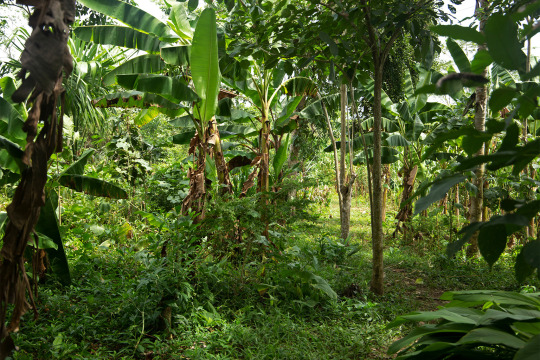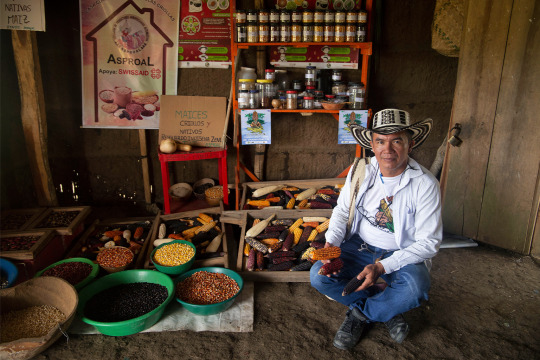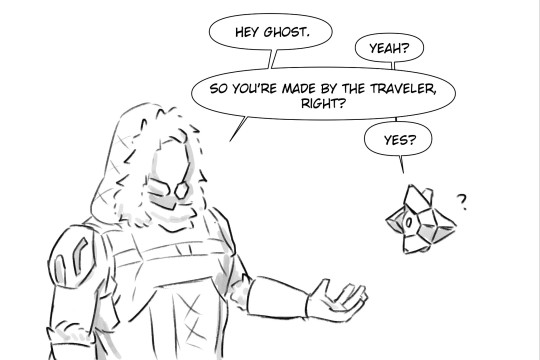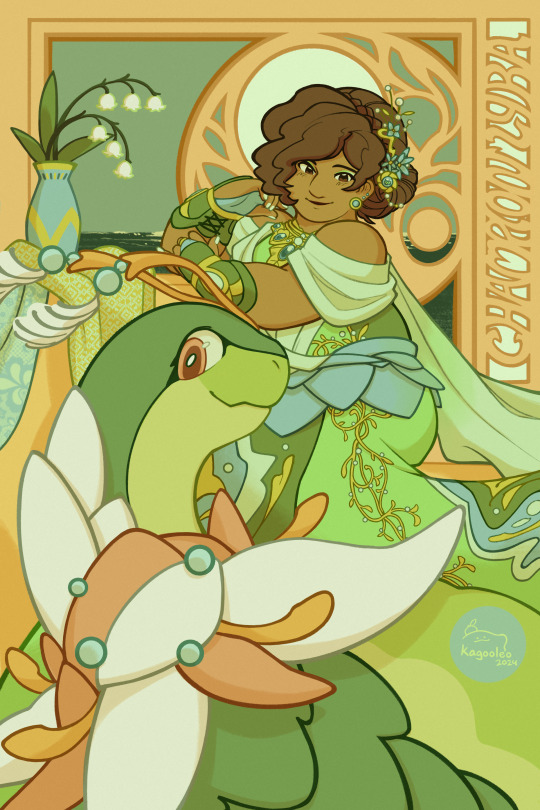#traditional medicines
Explore tagged Tumblr posts
Text

"INDIAN ART IS BEING REVIVED," Niagara Falls Review. October 18, 1933. Page 2. ---- Children model from life, forests supply materials for dyes, paints, ---- NATIVE SCHOOL ---- VICTORIA, Oct., 1 - (CP) - Indian arts are being revived in native schools of the Okanagan Valley. Children take time out from study of the three R's to scour the forests for flowers and roots which are used to instruct them in the almost lost arts of their ancestors.
Mosses, flowers, roots and bart are made into dyes and paints. Old recipes for the making of medicines from herbs and roots are tested while the children strive to Improve and perfect their creations.
Spinning, weaving, dying, pottery, clay modelling, carving and design are attempted by the children in the class-room. To the accompaniment of the click, clack of the spinning loom children sing Indian songs and listen to records of musical selection.
Ponies, dogs, cats and calves serve as life models for the drawing class. The mascot, a pet deer, is often coaxed to pose. Clays used for modelling are found on the reserve. After they have been worked they are placed in pinewood fire, then set to cool and polished. The school works out of doors.
Herbs that are collected include greaseweed which is prepared for the treatment of rheumatism. For respiratory aliments, a decoction of sunflower seeds were found beneficial. Butterfly weed, as an emetic, was voted perfect while the pitch of the fir balsam was used as a salve in the treatment of wounds.
One method used in the treatment of snake bite was the application of the powdered rattle of the rattle- snake, rubbed into the wound. Colors of the Okanagan tribe-red, black and yellow are employed in the painting class. Paint is obtained from red and yellow ochre, mixed with fish oil, and black from charred pinewood embers.
Ochre is secured from Tullameen, near Princeton. Tullameen being the Indian word for paint. In the olden days it was exported in large quantities to different parts of the American continent. The Blackfeet used it when on the war path.
#victoria#okanagan#herbal medicine#traditional medicines#herbalism#public school#residential school#indian residential schools#reservation system#first nations#indigenous people#settler colonialism in canada#syilx nation#great depression in canada
6 notes
·
View notes
Text
Exploring the world of healthcare options can be daunting, particularly when considering the use of medical cannabis. For residents with a medical card in Palm Coast, Florida, understanding the nuances between medical cannabis and traditional medications is crucial.
0 notes
Text
yes, doctors suck, but also "the medical ethics and patient interaction training doctors receive reinforces ableism" and "the hyper competitive medical school application process roots out the poor, the disabled, and those who would diversify the field" and "anti-establishment sentiment gets applications rejected and promotions requests denied, weeding out the doctors on our side" and "the gruesome nature of the job and the complete lack of mental health support for medical practitioners breeds apathy towards patients" and "insurance companies often define treatment solely on a cost-analysis basis" and "doctors take on such overwhelming student loan debt they have no choice but to pursue high paying jobs at the expense of their morals" are all also true
none of this absolves doctors of the truly horrendous things they say and do to patients, but it's important to acknowledge that rather than every doctor being coincidentally a bad person, there is something specific about this field and career path that gives rise to such high prevalence of ableist attitudes
and I WILL elaborate happily
#theres so much that contributes to this#and its such a traditional field that any change takes ten years to take effect even when its not as controversial as disability rights#ive no lost love for doctors as a whole#but the deeper causes here need to be examined to understand how this problem manifested and what can be done to fix it#disability#chronic illness#ableism#premed#medicine#salt baby talks
22K notes
·
View notes
Text
Global Homeopathic Dilutions Market Is Estimated To Witness High Growth Owing To Increasing Demand For Natural Remedies

The Global Homeopathic Dilutions Market is estimated to be valued at US$7.11 billion in 2023 and is expected to exhibit a CAGR of 18.5% over the forecast period 2023-2030, as highlighted in a new report published by Coherent Market Insights. Market Overview: Homeopathic dilutions refer to highly diluted substances used in homeopathic medicine. These dilutions are believed to have therapeutic effects and are widely used for treating various ailments. The market for homeopathic dilutions is growing rapidly due to the increasing demand for natural and holistic remedies. Homeopathy offers a safe and effective alternative to conventional medicine, which has led to a rise in its adoption globally.
Market Key Trends: One key trend driving the growth of the global Homeopathic Dilutions Market is the growing consumer preference for natural remedies. With increasing awareness about the potential side effects of conventional medicine, consumers are seeking alternative treatment options that are safe and have fewer side effects. Homeopathic dilutions, derived from natural substances, fulfill this requirement and are gaining popularity among health-conscious individuals. For example, Arnica montana, a homeopathic dilution made from the arnica plant, is commonly used to treat pain, bruising, and inflammation. This natural remedy has gained significant traction, thanks to its effectiveness and minimal side effects. As a result, the demand for homeopathic dilutions made from different natural substances is expected to increase during the forecast period.
PEST Analysis: - Political: The regulatory landscape for homeopathic products varies across different countries. While some countries have well-defined regulations and licensing requirements, others have more lenient regulations. It is important for manufacturers and suppliers to comply with the political environment of the market they operate in. - Economic: The homeopathic dilutions market is influenced by economic factors such as income levels, disposable income, and healthcare expenditure. Higher disposable income and increased healthcare spending are expected to drive market growth. - Social: There is a growing preference for natural and holistic remedies among consumers. The shift towards natural healthcare solutions is driven by factors such as increased awareness about the potential side effects of conventional medicine and the desire for a more personalized approach to healthcare. - Technological: Advancements in manufacturing technologies and processes have improved the quality and efficacy of homeopathic dilutions. These advancements have also enabled manufacturers to develop new formulations and customize treatments based on individual needs.
Key Takeaways: 1: The Global Homeopathic Dilutions Market Demand is expected to witness high growth, exhibiting a CAGR of 18.5% over the forecast period. This growth can be attributed to increasing consumer demand for natural remedies. As individuals become more aware of the potential side effects of conventional medicine, they are turning towards safer and holistic alternatives like homeopathy. 2: The Asia-Pacific region is expected to be the fastest-growing and dominating region in the Homeopathic Dilutions Market. This can be attributed to the rising population, increasing disposable income, and growing awareness about the benefits of homeopathy in countries like India and China. 3: Key players operating in the global Homeopathic Dilutions Market include Boiron, Heel, Schwabe Group, Dolisos, Nelsons, Weleda, SBL Homeopathy, Hahnemann Laboratories Inc., Reckeweg, Helios Homeopathy, Ainsworths, Pekana, WHP (Washington Homeopathic Products), Hyland's Homeopathic, and Hapé Homeopathic Pharmacy. These players focus on product innovation, strategic collaborations, and mergers & acquisitions to strengthen their market presence.
#Homeopathic Dilutions Market#Homeopathic Dilutions Market Insights#Homeopathic Dilutions Market Forecast#Homeopathic Dilutions Market Analysis#Homeopathic Dilutions Market Outlook#Homeopathic Dilutions#traditional medicines#natural remedies#health#holistic healing#Coherent Market Insights
0 notes
Text




vashu as a b-day present for my friend 💉💊
#i really love how he turned out#impossible dumb ass buffoon. love him to death#my art#artists on tumblr#art#illustration#trigun#traditional art#vash the stampede#trigun fanart#cw needles#cw medicine
1K notes
·
View notes
Text




They hate each other
#keeping the tradition going and drawing lu slop when im sick#its my medicine#they're bros ig don't worry#i just always hc them being kind of opposites of each other#but still very alike#wilimia art#linked universe#linkeduniverse#lu warriors#lu twilight
914 notes
·
View notes
Text

Darius taking care of Hunter after a visit to the emperor...
Please reblog, don’t repost :)
#my art#toh#the owl house#toh hunter#hunter deamonne#darius deamonne#dadrius#when u dont have healing magic but-#at least there's healing patches :(#and traditional medicine#toh flapjack
2K notes
·
View notes
Text

#kusuriuri#medicine seller#mononoke#mononoke 2007#ayakashi#fanart#traditional art#traditional painting
533 notes
·
View notes
Text
I'm gonna go ahead and say this one more time, as someone whose ancestors literally evolved traditional medicine, 'cause I been seeing some dumb shit on social media again.
The average joe schmol doesn't possess enough knowledge of actual traditional medicine to know what the hell they're doing. Chances are, they end up whipping some rando concoction that at best does nothing, at worst is toxic.
The difference between medicine and poison is often the dosage.
Herbalism, alternative healing, home remedies, they do have their places in the modern world. But unless you really know what the fuck you're doing, you're better off and much safer with something FDA approved, than listen to some white lady with dreadlocks on TikTok who calls herself a "natural healer" and literally teaches you how to poison yourself.
I research and study herbs for fun, and my herb collection is way bigger and more practical than some souped up pretty picture on the internet. And you know what's the first thing I go for when I have a migraine? Excedrin.
When in doubt, modern medicine first, everything else supplemental.
#mother witch advice#witches of color#witchblr#witch community#witches of tumblr#herbalism#traditional medicine#nature magic#hearth witch#wise woman#asian witch
645 notes
·
View notes
Text
"In response to last year’s record-breaking heat due to El Niño and impacts from climate change, Indigenous Zenù farmers in Colombia are trying to revive the cultivation of traditional climate-resilient seeds and agroecology systems.
One traditional farming system combines farming with fishing: locals fish during the rainy season when water levels are high, and farm during the dry season on the fertile soils left by the receding water.
Locals and ecologists say conflicts over land with surrounding plantation owners, cattle ranchers and mines are also worsening the impacts of the climate crisis.
To protect their land, the Zenù reserve, which is today surrounded by monoculture plantations, was in 2005 declared the first Colombian territory free from GMOs.
...
In the Zenù reserve, issues with the weather, climate or soil are spread by word of mouth between farmers, or on La Positiva 103.0, a community agroecology radio station. And what’s been on every farmer’s mind is last year’s record-breaking heat and droughts. Both of these were charged by the twin impacts of climate change and a newly developing El Niño, a naturally occurring warmer period that last occurred here in 2016, say climate scientists.
Experts from Colombia’s Institute of Hydrology, Meteorology and Environmental Studies say the impacts of El Niño will be felt in Colombia until April 2024, adding to farmers’ concerns. Other scientists forecast June to August may be even hotter than 2023, and the next five years could be the hottest on record. On Jan. 24, President Gustavo Petro said he will declare wildfires a natural disaster, following an increase in forest fires that scientists attribute to the effects of El Niño.
In the face of these changes, Zenù farmers are trying to revive traditional agricultural practices like ancestral seed conservation and a unique agroecology system.

Pictured: Remberto Gil’s house is surrounded by an agroforestry system where turkeys and other animals graze under fruit trees such as maracuyá (Passiflora edulis), papaya (Carica papaya) and banana (Musa acuminata colla). Medicinal herbs like toronjil (Melissa officinalis) and tres bolas (Leonotis nepetifolia), and bushes like ají (Capsicum baccatum), yam and frijol diablito (beans) are part of the undergrowth. Image by Monica Pelliccia for Mongabay.
“Climate change is scary due to the possibility of food scarcity,” says Rodrigo Hernandez, a local authority with the Santa Isabel community. “Our ancestral seeds offer a solution as more resistant to climate change.”
Based on their experience, farmers say their ancestral seed varieties are more resistant to high temperatures compared to the imported varieties and cultivars they currently use. These ancestral varieties have adapted to the region’s ecosystem and require less water, they tell Mongabay. According to a report by local organization Grupo Semillas and development foundation SWISSAID, indigenous corn varieties like blaquito are more resistant to the heat, cariaco tolerates drought easily, and negrito is very resistant to high temperatures.
The Zenù diet still incorporates the traditional diversity of seeds, plant varieties and animals they consume, though they too are threatened by climate change: from fish recipes made from bocachico (Prochilodus magdalenae), and reptiles like the babilla or spectacled caiman (Caiman crocodilus), to different corn varieties to prepare arepas (cornmeal cakes), liquor, cheeses and soups.
“The most important challenge we have now is to save ancient species and involve new generations in ancestral practice,” says Sonia Rocha Marquez, a professor of social sciences at Sinù University in the city of Montería.
...[Despite] land scarcity, Negrete says communities are developing important projects to protect their traditional food systems. Farmers and seed custodians, like Gil, are working with the Association of Organic Agriculture and Livestock Producers (ASPROAL) and their Communitarian Seed House (Casa Comunitaria de Semillas Criollas y Nativas)...

Pictured: Remberto Gil is a seed guardian and farmer who works at the Communitarian Seed House, where the ASPROL association stores 32 seeds of rare or almost extinct species. Image by Monica Pelliccia for Mongabay.
Located near Gil’s house, the seed bank hosts a rainbow of 12 corn varieties, from glistening black to blue to light pink to purple and even white. There are also jars of seeds for local varieties of beans, eggplants, pumpkins and aromatic herbs, some stored in refrigerators. All are ancient varieties shared between local families.
Outside the seed bank is a terrace where chickens and turkeys graze under an agroforestry system for farmers to emulate: local varieties of passion fruit, papaya and banana trees grow above bushes of ají peppers and beans. Traditional medicinal herbs like toronjil or lemon balm (Melissa officinalis) form part of the undergrowth.
Today, 25 families are involved in sharing, storing and commercializing the seeds of 32 rare or almost-extinct varieties.
“When I was a kid, my father brought me to the farm to participate in recovering the land,” says Nilvadys Arrieta, 56, a farmer member of ASPROAL. “Now, I still act with the same collective thinking that moves what we are doing.”
“Working together helps us to save, share more seeds, and sell at fair price [while] avoiding intermediaries and increasing families’ incomes,” Gil says. “Last year, we sold 8 million seeds to organic restaurants in Bogotà and Medellín.”
So far, the 80% of the farmers families living in the Zenù reserve participate in both the agroecology and seed revival projects, he adds."
-via Mongabay, February 6, 2024
#indigenous#ecology#agroforestry#agriculture#traditional food systems#traditional medicine#sustainable agriculture#zenu#indigenous peoples#farming#colombia#indigenous land#traditional knowledge#seeds#corn#sustainability#botany#plant biology#good news#hope#climate action#climate change#climate resilience#agroecology#food sovereignty
1K notes
·
View notes
Text
Here’s the thing:
I want Predathos to get out.
Not because I hate the gods or want to see them killed or driven off (in fact, I find the 'the gods are tyrants' arguments to be laughably incorrect and deeply hope c3 ends with the pantheon still present) but because ending the campaign without facing Predathos would be a huge anticlimax. If Bells Hells simply kill Ludinus and go back home, it will feel like killing the minion but never actually getting to the big bad. What if c1 had ended with killing the Briarwoods but never getting around to Vecna. What if the m9 had actually managed to kill Lucien with their trap in Aeor before he made it into the Astral Sea to set off his plan. We wouldn’t have gotten to see the nature of the somnovem, the horrific flesh city or the peace of putting it to rest, the wild creativity that was the final battle of imagination. If c3 ends without showing us what the fuck Predathos actually is I will go lie facedown on the floor for a week wondering what we missed out on.
Now, this doesn't mean I want the hells to purposefully let the beast out of its cage. I would prefer the campaign not end with the heroes finalizing the villain's plan and setting off calamity 2.0, thank you very much. But if Ludinus still has an ace up his sleeve that makes Predathos' release all but inevitable (which I honestly expect)? Maybe even if there’s a party split and one or a couple of the hells take the decision into their own hands (looking at you, Ashton)?
I'd love that shit. Show us what Predathos truly is. Let it eat Ludinus maybe. Give us a glimpse of the true end if it’s let loose on Exandria. Have there be a horrific realization of oh, this is what the Vanguard was arguing in favor of. And then kill it.
#critical role#cr3#cr3 spoilers#i said once that c1 was a traditional minion + villain set up with the briarwoods and vecna#and c2 was the minion turning on the villain with lucien blowing up the somnuvem and taking their place#i would LOVE IT if c3 finishes the pattern by having the villain turn on the minion#i mean we already got some of that by ludinus trying to siphon liliana#but i want that old man to get a taste of his own medicine#let predathos eat him or possess him or fucking trample him or something#tear him down by his own hubris#and frankly make apparent the hubris of anyone who thought releasing predathos and killing the gods was a good and just plan#nella talks cr#anyway right now my theory is that matt has a twist up his sleeve regarding the nature of predathos and its potential release#and if the hells stop ludinus and opt not to let it out themselves SOMETHING will still happen#maybe killing ludinus is what'll open the cage by making him accessible as a vessel. what do i know#the whole vessel thing is also screaming 'someone is going to sacrifice themselves to contain predathos'
204 notes
·
View notes
Text
It's me Mahmoud and This is my campaign that I recently started friends!
Via PayPal directly:
Honestly at first I completely refused to create such fundraising campaigns, until we were fed up and starving.
I am not ashamed, we are now more than homeless, hungry, and our situation is miserable.
my family and I really need your support.
So this is our attempt..
I will be happy to contact you at any time to confirm any details or information.
Thank you all 🙏♥️

#free gaza#free palestine#healthcare#i stand with palestine#medicine#self care#@palestinegenocide#all eyes on palestine#free rafah#gaza#elon musk#election 2024#travel#stop the genocide#transgender#traditional art#transformers#donald trump#home & lifestyle#art#save palestine#gaza strip#soccer#science#sports#spotify#advertising#architecture#animals#black and white
213 notes
·
View notes
Text
traveler powder




#its weird in d2 seeing god as a physical being#do you know in traditional chinese medicine they used to just. grind random stuff up as medicine?#yeah that#don't ask me why i have this whole argument it was revealed to me in a (day)dream#maybe shouldn't really make this into a comic i don't really have a good composition for this in the first place#destiny 2#destiny hunter#destiny ghost#destiny traveler#(is that even a tag actually being used)#destiny 2 art#my art
263 notes
·
View notes
Text

johto’s champion and chronicler for the deity of the ilex shrine, it’s lyra!🌿
this one took me a while due to trying out different techniques (studying a Lot of art nouveau) and making a couple changes to her outfit (the details help), but I’d like to think she’s learned a lot in her journey and wanted to reflect her experience more in her champion fit
her specialty would be in fairy types and her meganium’s divergent evolution is grass/fairy 🧚🪷
and a bonus w/ the johto gang after the photoshoot!

#kagarts#trainer lyra#meganium#pokemon hgss#get ready for a bigass tag wall again HYAH#her team picks are meganium (grass/fairy + shiny!) azumarill togekiss alola ninetales gardevoir and clefable (mega evolves for fairy/steel)#terrains and high sp atk + statuses galore + her dino can cause a stronger confusion (like toxic w badly poisoned but its w/ Bad headaches)#i'll probably make changes as i go design wise for meganium but colors were inspo from sampaguita flowers#the flower's associated with true friendship and utilized in medicines or given as good gestures in various traditions and celebrations#and also bc she's 🇵🇭 babey!!!!!!!! i'm slapping all my favs w the pinoy beam and not even the dinos are safe >:]#since her dino is shiny a lot of the colors are just a few color diffs where the little orbs are + warmer tones. gotta make a ref sometime#not sure if I should tag the others bc the focus is on her. but the quartet always pulls thru for each other#i like thinking silver gets comfortable enough to be the friend that's “s'cuse you my Friend asked for No pickles”#silver in line picking up her food like “yeah yeah i know her and btw that’s CHAMPION lyra to you. YES she ordered a strawberry shake”#both of their meganiums are Best friends and silver likely uses his dino when you rematch him (and his would beee grass/dragon)#calling this piece Done though oh my god this semester has been nuts. don't wanna take any longer on a single piece or i'm eating tree bark#tumblr's gonna kill the quality on it but idgaf im Done. i need to tidy up my sheezy now
242 notes
·
View notes
Text


feeding the stray cat (ID in alt)
#vashwood#vash the stampede#nicholas d wolfwood#trigun#i think i mentioned it like once on twit or smth but vash is just a stray kitty to wolfwood in their early blooming “friendship”...#treating him just like kuroneko... instead of food though its bandages and other medicinal aid#i like to imagine wolfwood's realization of feelings jumps from barely thinking of vash as a “friend” in the traditional sense to immediate#whiplash of intense romantic feelings that he wouldn't even be able to label as romantic#just “oh i DO care about him.” and “I never realized how much it pisses me off that he doesn't listen to me until now"#stuff like that.. :'3 anyway i like this au a good amount but i wish i was lessss shy to share stuff about my aus...#ruporas art
1K notes
·
View notes







